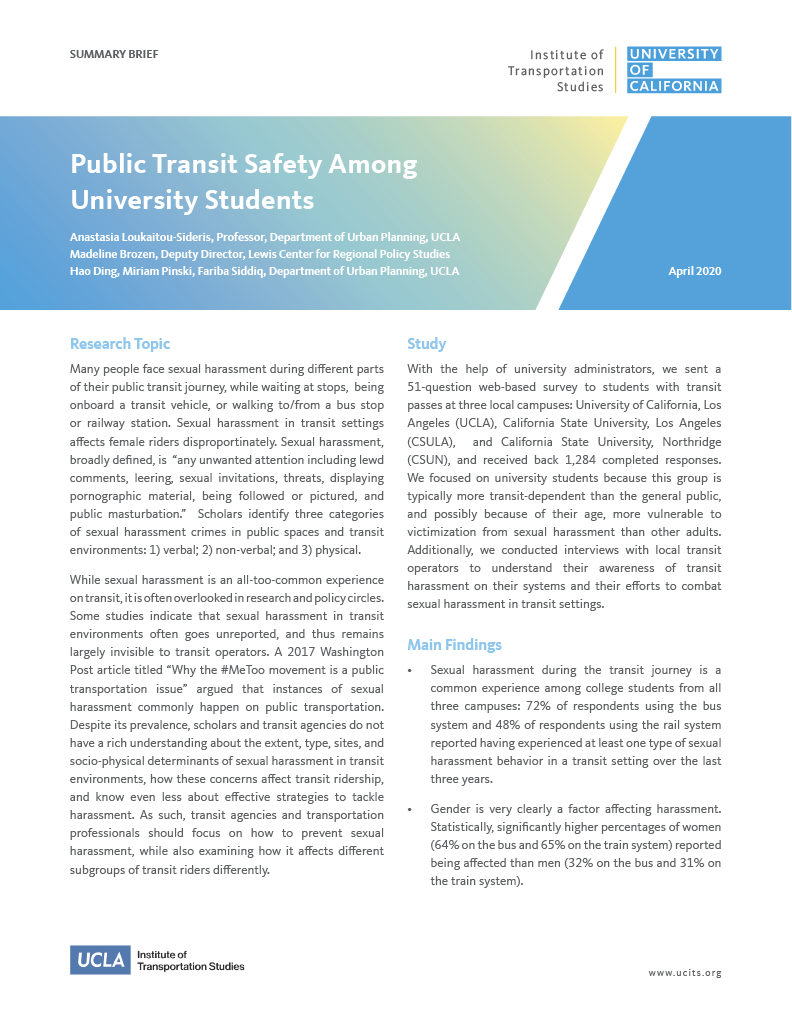Date: April 1, 2020
Author(s): Anastasia Loukaitou-Sideris, Madeline Brozen, Hao Ding, Miriam Pinski, Fariba Siddiq
Abstract
Many people face sexual harassment during different parts of their public transit journey, while waiting at stops, being onboard a transit vehicle, or walking to/from a bus stop or railway station. Sexual harassment in transit settings affects female riders disproportinately. While sexual harassment is an all-too-common experience on transit, it is often overlooked in research and policy circles. Some studies indicate that sexual harassment in transit environments often goes unreported, and thus remains largely invisible to transit operators. This research surveyed students from the University of California, Los Angeles (UCLA), California State University, Los Angeles (CSULA), and California State University, Northridge (CSUN), and received 1,284 completed responses. Sexual harassment during the transit journey is a common experience among college students from all three campuses: 72% of respondents using the bus system and 48% of respondents using the rail system reported having experienced at least one type of sexual harassment behavior in a transit setting over the last three years. Those affected were disproportionately women, Asian, and Latino. Only 10% of all students who had experienced or observed harassment reported the incident.
About the Project
Transit use is on the decline in many American cities. Research has shown that concerns about transit safety may influence travel behavior and transit use, and that women are particularly fearful about victimization while travelling. Studies have also shown that women are also very concerned about one type of crime — sexual harassment — which often goes unreported, and thus remains largely invisible to transit operators.The research team will survey college students in 16 cities in six continents to examine their patterns of mobility and transit, with an emphasis on their feelings of safety on public transit and other transportation modes, experiences of sexual harassment, and other types of crime and victimization on public transport and other transportation modes. The results of the survey will establish the extent to which fear regarding their safety affects college students’ transit ridership, and the research team will examine how survey responses may vary because of the students’ sociodemographic characteristics.


